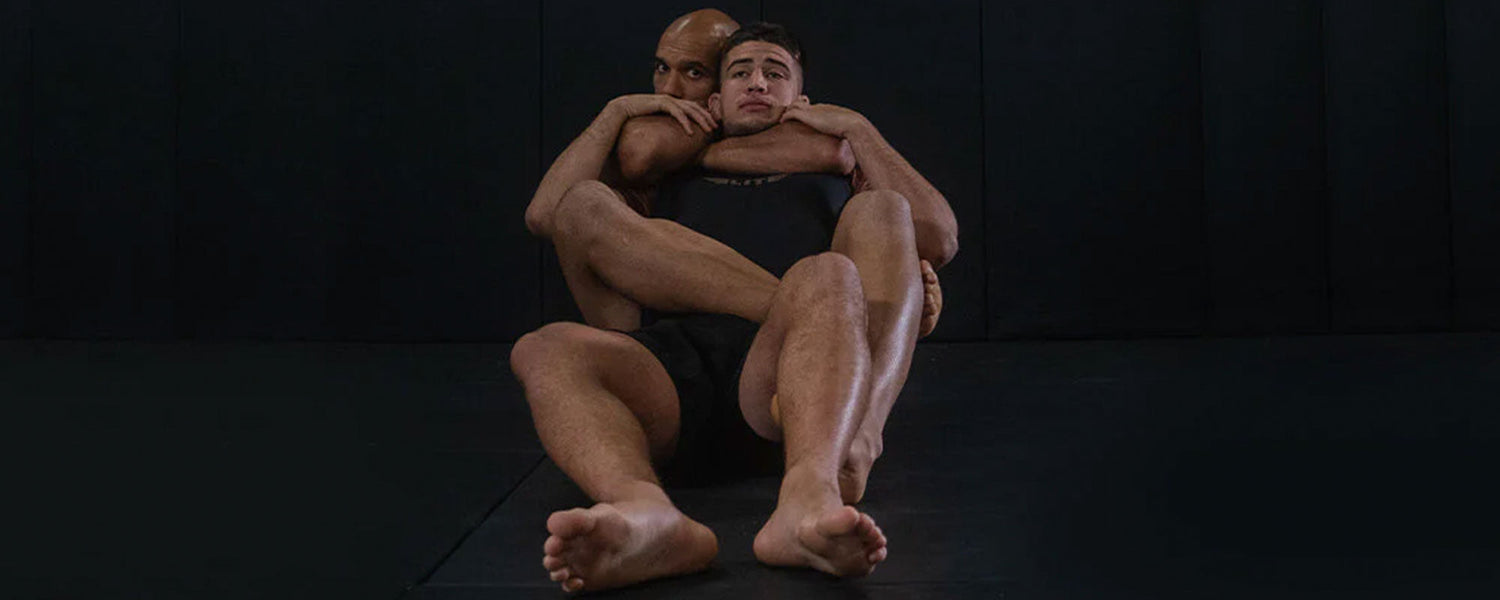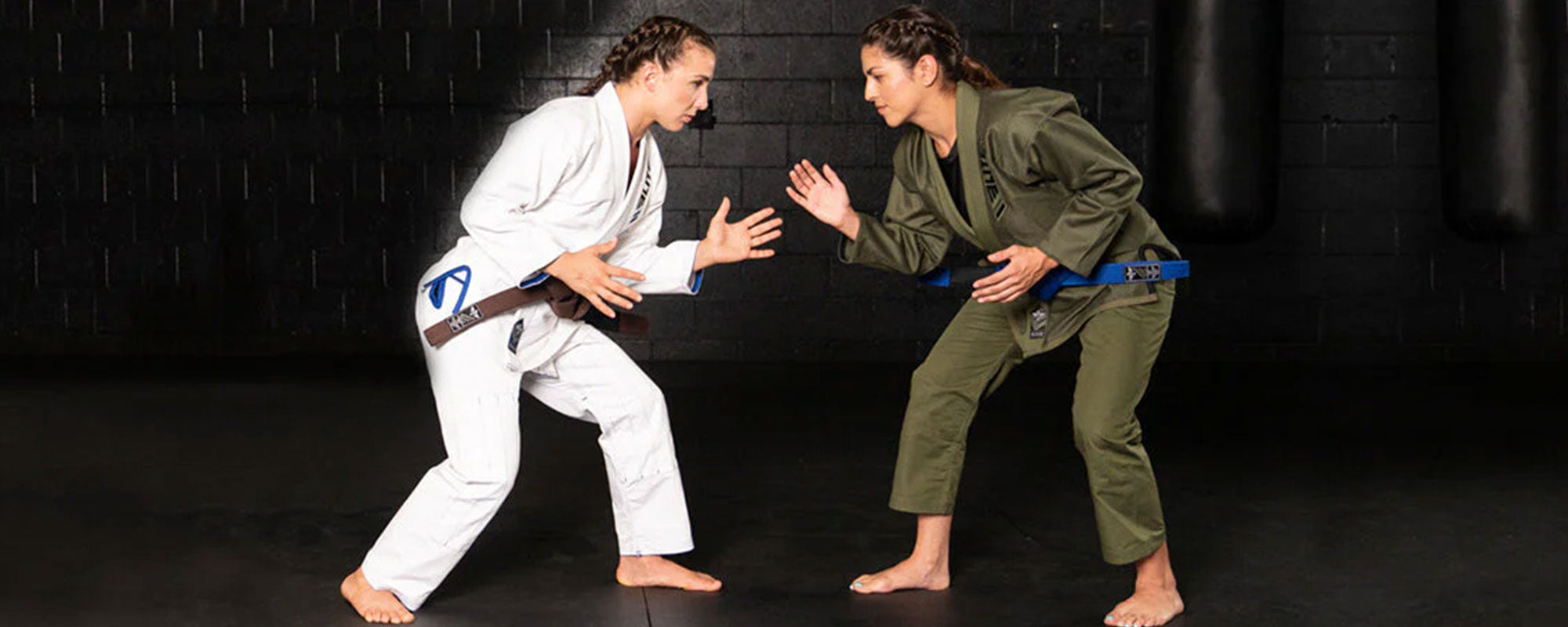Table of content
1. Overview
Starting the BJJ journey may be quite hectic and overburdened, for some beginners. The learning of different grappling techniques may also get tiresome. But, there is no specific timeline to perfect it, it depends on the effort, body capacity, and dedication of the practitioner.
The initial time of BJJ training is crucial to learn the importance of submission techniques for survival on BJJ mats. The real magic is in learning the art of delaying submission and tapping to frustrate the opponent and get time to escape from submissions. So, as a BJJ beginner, learning to defend against commonly used submissions such as the rear-naked choke, armbar, and kimura is vital.
2. BJJ Submission
In BJJ, a “submission” technique can control or subdue an opponent when performed successfully. If applied with brutal force, these techniques can badly injure or hurt the opponent. Different submission techniques target different body parts.
Learning submissions are a significant part of BJJ training. During BJJ fights, submissions symbolize victory and accomplishment against an opponent.
The opponent is bound to tap during successful submission to avoid injury and harm. Usually, submission attacks are aimed at the neck, arm, and legs of the opponent.

2.1. Types of Submissions
The list of submissions and their variations in BJJ is almost endless, and new variations keep adding day by day. These are base submissions.
- Triangle Choke
- Arm Triangle Choke
- Armbar
- Omoplata
- Wrist Lock
- Kimura Lock
- Guillotine Choke
- Bow and Arrow Choke
- Rear Naked Choke
- Ezekiel Choke
- Clock Choke
- Cross Collar Choke
- Baseball Choke
- North-South Choke
- Loop Choke
- Heel Hook
2.2. Position Before Submission
A “position” refers to two grapplers' bodily arrangement or placement. So, the execution of successful submissions strongly depends on the positions. A BJJ beginner must establish and maintain a dominant or controlled position before attempting to submit his opponent. This is the way to dominate and tap the opponent in a safe and controlled way.
2.3. Tapping to a Submission
A “tap” is used to accept a successfully executed submission, and the opponent applying the submissions will release the hold. The opponent will not get harmed or injured with a tap at the right time. Tap is done by striking a hand on the mat or on the body of the opponent loudly and repeatedly.
2.4. Purpose of Tapping
The tap prevents the fighter from getting severely hurt. The purpose of BJJ sparring and rolling is continuous training. It is always recommended, especially for beginners to tap out early when caught in a submission.
2.5. Reasons for Not Tapping
A BJJ beginner needs to learn to tap, as it is just like playing a game without respecting the rules once you lose. Sometimes, BJJ grapplers don’t tap out of ego and superiority complex. This approach is discouraged because it could get you hurt or cause a serious injury.
It is natural to be caught in a submission, so there is no need to hesitate in tapping. BJJ beginners won’t tap to show their resistance, but this won’t enable them to roll on BJJ mats again in case of any injury.
3. Need of Learning BJJ Submissions for Beginners
As a BJJ beginner, always find a submission according to the body weight, height, and preference of your opponent. For example, taller people can easily practice triangle, D’arce, and anaconda chokes with longer limbs, whereas short people will mostly choose guillotines, rear naked chokes, and arm triangles.
It is also recommended to analyze the strengths and weaknesses before selecting basic BJJ submission techniques. Fighters must focus on learning and mastering the basic submission techniques before going to the advanced levels. A BJJ practitioner also needs to do sparring regularly to control the body movements, techniques, stamina, physical strength, and technical skills to master basic BJJ submissions.
3.1. Tips to Learn BJJ Submissions for Beginners
- Always try to master one submission technique at one time.
- Self-learning and improvement.
- Try to master submissions that are suitable for your body type and grappling techniques.
- Try to learn and practice submissions in parts.
- Try to focus on each part to evaluate the effectiveness and speed during successful execution.
- Try to teach submission to your teammates.
- Practice again and again.
- Try to learn the defense against each submission too.
- Enlist all strengths and weaknesses for basic submission techniques.
4. BJJ Submissions for Beginners
Following are the basic submission techniques for a BJJ beginner to learn to build a solid BJJ foundation.
4.1. Closed Guard Submissions
Closed guard submissions are among the most common defensive positions used in BJJ fighting. They are executed when the bottom player’s legs are closed and locked around the top player’s waist. It is a simple technique, and even a BJJ beginner can use his legs and arms to control the opponent and keep them at a distance while losing balance.
The closed guard also offers a variety of submissions — such as the armbar, triangle, and omoplata to the bottom player. The top player may use better control points such as side mount, full mount, and back mount.
4.2. Bow & Arrow Choke
The bow and arrow choke is basically executed by grabbing the collar from the back control position. It’s performed by gripping the opponent’s collar and a leg to perform the choke while restricting the opponent’s movement. It can also be executed with a turtle, control, and closed guard.
4.3. Arm Bar
It is a basic and common joint look to improve the technical skills in BJJ. It enables a BJJ beginner to learn the various angles and movements of the arm bar for solid attack and defense. It can be executed in many ways. BJJ practitioners must understand how to survive and defend the armbar with escape techniques. It is the most painful technique to grab hold of the opponent's arm and extend the legs across their chest to achieve a chest pull.
4.4. Kimura
The Kimura submission technique also targets arms to have bent locks. The opponent’s arm could be bent at 90°, which is painful and forces the opponent to tap out. It also works on sweeps and transitions. It is a basic lever system where immense pressure is put on the opponent’s shoulder and elbow joints.
4.5. Triangle Choke
The triangle choke is performed by cutting off the blood supply at the neck. It is a powerful and uncomfortable choke. For the BJJ beginner, the technique is beneficial because it provides a high level of control while using the legs to control the opponent.
In BJJ training, the use of legs is crucial to control your opponent and break their posture. It is a basic submission technique to be learned by beginners. This positioning can be used to control the opponent’s back instead of the traditional hooks on the inside of the leg.
4.6. Rear Naked Choke
The rear-naked choke is an important grappling submission where the BJJ beginner takes hold of the opponent’s neck from behind using his forearms. It is executed from the back control position by dominating the opponent from the back using feet, legs, and hands.
4.7. Guillotine Chokes
It resembles a headlock. For mastering guillotine chokes, BJJ beginners need to work on right grips and right angles. It can be executed by grabbing the opponent’s neck and placing his head (face down) under his armpit. Fighter can even connect their arms and squeeze the opponent’s head. It can also be executed with a front headlock position, closed, open, and mount guard.
10 Submissions to learn
Best Submissions for Beginners
First five Submissions to learn
5. Conclusion
BJJ beginners just need to practise the simple and easy submissions with specific positions. They must be involved in constant practising of the submissions to avoid failures. During BJJ training, the fighters must remember to invest all their efforts to learn one submission technique at one particular time. Learning, mastering, and then applying the submission technique successfully takes time, energy, and continuous repetition.











Leave a comment
This site is protected by hCaptcha and the hCaptcha Privacy Policy and Terms of Service apply.